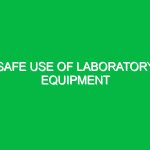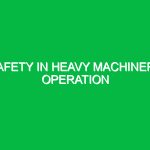In today’s dynamic work environment, the management of hazardous materials is crucial for ensuring the safety and health of employees. A well-maintained Workplace Hazardous Material Inventory (WHMI) is not just a regulatory requirement; it is a fundamental aspect of a robust Health, Safety, and Environment (HSE) strategy. This article will delve into the significance of WHMI, the hazards associated with it, the safety precautions and best practices to adopt, and the regulations governing hazardous materials in the workplace.
What is Workplace Hazardous Material Inventory?
Workplace Hazardous Material Inventory is a systematic listing and management of all hazardous materials present in a work environment. This inventory typically includes chemicals, biological agents, and other substances that could pose risks to health and safety. The relevance of WHMI in HSE cannot be overstated. It serves as a critical tool for identifying, assessing, and controlling risks associated with hazardous materials. Moreover, maintaining an accurate inventory helps organizations comply with regulatory requirements and promotes a culture of safety.
Identifying Hazards and Risks in Workplace Hazardous Material Inventory
Understanding the potential hazards associated with hazardous materials is the first step in effective risk management. Common hazards include:
Chemical Hazards
Chemical hazards can arise from exposure to toxic, flammable, or reactive substances. For instance, in a manufacturing facility where solvents are used, workers may risk inhaling harmful vapors or suffering skin irritations. It’s essential to identify the chemicals in use, their properties, and the potential health effects they may cause.
Physical Hazards
Physical hazards involve aspects such as fire, explosions, or radiation. For example, a warehouse storing flammable liquids needs to be evaluated for fire risks. Proper inventory management helps in maintaining safe storage conditions and ensuring that emergency procedures are in place.
Biological Hazards
In industries like healthcare or laboratories, biological materials can pose significant risks. Pathogens or biohazardous waste require specific handling and disposal methods to prevent exposure. An accurate WHMI helps in tracking these materials and ensuring compliance with safety protocols.
Ergonomic Hazards
While not always associated directly with hazardous materials, ergonomic hazards can occur during the handling of heavy or awkwardly shaped containers. For instance, workers lifting large drums of chemicals may be at risk of musculoskeletal injuries. A comprehensive WHMI includes equipment and processes that minimize these risks.
Safety Precautions and Best Practices for Managing Hazardous Materials
To mitigate the risks associated with hazardous materials, organizations must implement robust safety precautions. Here are some best practices:
Regular Training and Awareness Programs
Employees should receive regular training on the hazards associated with the materials they handle. For instance, a personal anecdote comes from a chemical plant where a quarterly training session significantly reduced incidents of improper handling of corrosive substances. This ongoing education not only empowers workers but also reinforces the importance of safety protocols.
Proper Labeling and Signage
All hazardous materials must be clearly labeled according to regulatory standards. This includes using appropriate symbols and color codes. For example, the Globally Harmonized System (GHS) provides a standardized approach to chemical labeling. Clear signage helps workers quickly identify hazards and respond accordingly.
Storage and Segregation
Storing hazardous materials correctly is crucial. In a warehouse setting, flammable liquids should be kept away from oxidizers to prevent dangerous reactions. Using dedicated storage areas with appropriate containment measures can help in managing spills or leaks effectively.
Implementing Safety Data Sheets (SDS)
Each hazardous material should have an accompanying Safety Data Sheet (SDS) that outlines its properties, hazards, handling, and emergency measures. For instance, a construction site that used SDS effectively was able to respond promptly to an accidental chemical spill, minimizing harm to workers and the environment.
Regular Inspections and Audits
Conducting regular inspections and audits of the hazardous material inventory ensures compliance with safety practices. One company’s proactive approach included monthly audits that not only identified expired materials but also uncovered unsafe storage practices, leading to substantial improvements in safety.
Regulations and Standards Governing Workplace Hazardous Material Inventory
Organizations must comply with various regulations governing hazardous materials. In the United States, the Occupational Safety and Health Administration (OSHA) sets the standards under the Hazard Communication Standard (HCS), which mandates labeling and safety data sheets. Similarly, the Environmental Protection Agency (EPA) regulates the disposal and management of hazardous waste under the Resource Conservation and Recovery Act (RCRA).
Internationally, many countries follow the GHS, which standardizes classification and labeling of chemicals to enhance safety. Compliance with these regulations is not just a legal obligation; it is a fundamental element of a responsible safety culture.
Conclusion
In conclusion, a well-managed Workplace Hazardous Material Inventory is essential for maintaining a safe work environment. By recognizing hazards, implementing safety precautions, and adhering to regulations, organizations can significantly reduce the risks associated with hazardous materials. The journey towards a safer workplace is ongoing, requiring commitment, training, and vigilance. As industries continue to evolve, so must our approaches to managing hazardous materials, ensuring that safety remains a priority above all else.


